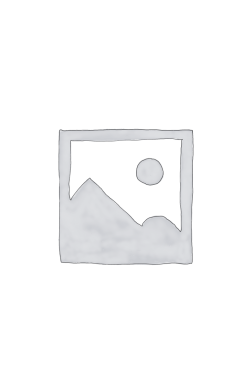Description
Go is an ancient, subtly beautiful game of territory. But with its nearly endless possibilities and challenges, it is more than just another game; it is a way of life for tens of millions of players throughout the world. Embodying four thousand years of Oriental thought and culture, go is the oldest game in the world still played in its original form.Go is the kind of game that one can learn in a day—and spend a lifetime perfecting. It is more art than science: in order to surround and capture the opponent’s territory, one needs intuition, flexibility, and acute perception combined with a sharp analytical mind. Each player is a partner in an exercise of coexistence; each player needs the other for self-enlightenment and for enjoyment. But then, too, go is a game whose strategy has been compared to the tactics of guerilla warfare. Go can be all things to all people; it is simple, elegant, and unexpectedly beautiful.This book contains an introduction; a brief example game; a clear, leisurely explanation of the rules; and illustrations of the simplest techniques of good play and of some easy and some more difficult problems the player will encounter. The appendixes include a concise list of rules, a glossary of technical terms, and a list of international and American go organizations. Among go players, Go for Beginners is known as the best beginner’s book available.
Additional information
| Weight | 0.74 kg |
|---|---|
| Dimensions | 0.87 × 13.1 × 2.15 cm |
| PubliCanadation City/Country | USA |
| Format | |
| language1 | |
| Pages | 160 |
| Publisher | |
| Year Published | 1977-3-12 |
| Imprint | |
| ISBN 10 | 0394733312 |
| About The Author | KAORU IWAMOTO (1902-1999) was one of the world's foremost experts on go, a holder of the highest professional Japanese go rank of 9-dan, and twice winner of the historic Honinbo tournament. He spent many of his later years as an ambassador of go, promoting the game in many Western countries. He founded the Iwamoto Foundation in 1986, which helps fund go centers throughout the world. |
Rated 4.4 out of 5 stars on Amazon's Customer Reviews! |
|
| Table Of Content | Preface 7Introduction by John C. Stephenson, President, American Go Association 8Part I: The Rules of Go1: Demonstration Game 152: Capture 22 Liberties 22 Solidly Connected Stones 23 Suicide is Illegal 27 Ko 28 Life and Death 35 False Eyes 38 Seki 44Part II: Elementary Tactics and Strategy3: At the Edge of the Board 514: Shicho 615: Geta and Loose Shicho 646: Semeai 647: Snap-back and Shortage of Liberties 738: Life and Death 77 Eye Shape 77 The Death Blow from Within 80 The Death Blow from Without 81 Cutting Points 82 Throw-in Plays 83 Me Ari Me Nashi 84 Bent Four in the Corner 859: General Strategy 93 The Corners are Important 93 Shimari 94 Extensions 96 Kakari 99 The 3-3 Point Invasion 102 Hasami 103 Make Territory While Attacking 104 Thickness 10510: Ranks and Handicaps 109 Improving One's Playing Ability 11411: Example Games 117Appendix: The Rules of Go 135Glossary 137National Go Associations 139American Go Contact List 141Bibliography 147About the Author 149 |
| Excerpt From Book | Introduction You hold in your hand an excellent beginner’s go book. The author, Kaoru Iwamoto, 9 Dan, is well known in Japan for his go achievements and is famous in the Western world for his efforts to popularize this most fascinating and profound game. The superiority of this book is no small contribution in that direction. Mr. Iwamoto goes beyond a clear rendition of the rules; by adding a thorough introduction to fundamental go strategy, he guides the neophyte toward a more complete understanding of the game. Go is a contest between two players who compete to secure territory. The territory consists of 361 points formed by the intersections of nineteen vertical and nineteen horizontal lines drawn on a wooden board. Players use lens-shaped discs, called stones, to mark off their territory. One opponent plays black stones, the other white, in alternating turns. The board, which is empty in the beginning, gradually fills as the players place their stones. Contrary to most Western games, motion in go takes the form of adding to what is already in place rather than moving the position of the pieces. Once put on the board, a go stone is stationary unless captured. The player controlling the largest total area at the end of the game is the victor. The intellectual enjoyment of go is enhanced by good playing equipment. Ideal go stones are made of shell and slate, although for economic reasons glass and plastic stones are most commonly used. The highest quality stones are known as yuki grade shell, distinguished by their perfectly parallel grain lines and their completely opaque color. The quality of go stones is also determined by their thickness. Thick stones, often up to ten millimeters, are preferable. Go stones are customarily grasped between the index and middle fingers. They are placed on the board with a quick, decisive action that creates a snapping sound. This tone is so valued as part of the charm of go that enthusiasts prefer thick kaya-wood boards with a chamber cut out on the underside to increase resonance. The stones are generally stored in handsome wooden bowls, called go ke, made of chestnut, mulberry, teak, or rosewood. The covers of the go ke are used to store enemy prisoners taken during the struggle for territory. In Japan, where go is a national pastime, it is more than a game. Go is taken quite seriously, as demonstrated by the fact that a strict system of ranking is used and that there are over four hundred professionals—men who earn their living by teaching go and evaluating other players. Shodan, or first dan, is the rank awarded to a player who has mastered all the fundamentals of go, such as proper shape, use of influence, effective fighting techniques, vital points, and counting. Ktu ranks are awarded to novice players in different stages of development. While a tenth kyu player is a beginner, a first kyu player would be only one step away from Shodan. The highest rank is Professional 9 Dan. As the beginner progresses up the kyu ranks toward the first dan level, he becomes increasingly aware of both the aesthetics and the struggle of a go contest. The unfolding geometrical patterns, the interaction of the basic elements of line and circle, stone and wood, and the meshing of grand-scale opposing strategies make go an artful game. But at tournament level, the protracted struggle brutally strains the players. The energy drain caused by long, intense concentration; by continually searching for the elusive tesujis, or exquisite tactical moves; and by ever tightening a winning grip on the position leave the players physically and mentally exhausted. One year at a state tournament, the reigning United States champion weighed himself before and after the two-day bout. He discovered he had lost five pounds as a result of the extreme effort expended in the match. Don’t let this mislead you into believing that go is so complex as to be impossible to master. Nothing could be further from the truth. Go is simplicity itself, really a child’s game. In Japan children learn to play go at the age of five. Gifted youngsters have been known to defeat opponents many years their senior. There may be several facets of go that will tax the patience of a Western beginner; however, those who persist are amply rewarded for their efforts with a lifetime of enjoyment. The more you develop your go skills, the more you can appreciate the beauty of the game. Although go is just beginning to grow in popularity in the United States, it has had an interesting one-hundred-year development on American soil. Go was played by Japanese immigrants in the pier cafés along the West Coast during the late 1880s. In those rough-and-tumble days, money was often wagered on go games. It was not unknown for disputes to occur, and sometimes even a murder resulted. Legend has it that the cut-out section on the underside of the go board was not originally carved for improving resonance, but for containing the blood of a decapitated kibitzer’s heard victimized by the samurai’s sword. Thus, it is not surprising that some of the immigrants took the game quite seriously. Go remained exclusively a part of Japanese culture for many years, with Americans taking little notice. Immigrants formed the San Francisco Go Club, the first go group to be permanently established in the United States. The group was chartered by the Japanese Go Association, and the original membership was composed entirely of Japanese. During the early twentieth century, some Americans began to take an interest in the ancient game. Today the San Francisco Go Club, which is still a center of activity, has a large percentage of young American players. In the 1940s, a drive was started to familiarized Americans with the game, and the American Go Association was founded. Today, there are two regularly published English periodicals available through the American Go Association, as well as a variety of books on advanced strategies. The Association also sanctions both state tournaments and annual national championship competition. Moreover, as an addition to the Japanese dan/kyu ranking system, the American Go Association has devised, and maintains, a numerical rating system so that its members can measure their improvement. As you begin Mr. Iwamoto’s Go for Beginners, accept my welcome to a game many people the world over have found to be a continuous source of entertainment and challenge; and perhaps someday we shall meet across the board. —John C. Stephenson President, American Go Association New York, New York November 1976 |
Only logged in customers who have purchased this product may leave a review.






Reviews
There are no reviews yet.